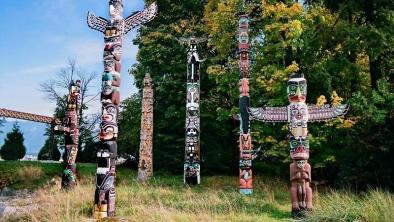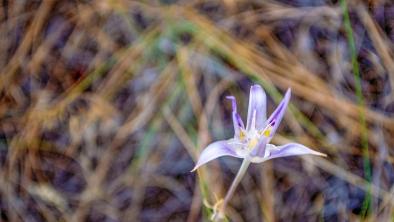Flood of anger
Globe and Mail

Mark Hume
Vancouver — From Saturday's Globe and Mail, Saturday, May. 30, 2009 03:53AM EDT
A punishing drought, which gave the State of Washington a grim warning about what the future might look like with global warming, has led to a U.S. dam proposal that threatens to drown a British Columbia valley.
The Shanker's Bend project, proposed by the Okanogan County Public Utility District, would dam the Similkameen River just a few kilometres south of the B.C. border.
The project would provide increased water storage and hydro generation for the town of Oroville, in north central Washington, but it would also back up water deep into the Similkameen Valley – flooding the habitat of endangered species in an area that has been proposed as a national park.
The impoundment would provide more water in a dry B.C. valley where organic orchards and vineyards have flourished only because of irrigation, but water levels would fluctuate to suit demands south of the border, not to meet Canadian needs.
“This project can't go ahead,” says Chloe O'Loughlin, executive director of the B.C. chapter of the Canadian Parks and Wilderness Society, who sees nothing positive in the proposal.
“Whatever happens, there are no benefits to Canada in this project. It threatens one of the three most endangered ecosystems in Canada … [and] when that impoundment is drawn down we will be left looking at extensive mud flats,” said Ms. O'Loughlin, whose organization has been leading opposition to the project.
CPAWS has been granted intervenor status before the U.S. Federal Energy Regulatory Commission, in Washington, D.C., which will determine if the Shanker's Bend project gets approved.
CPAWS, which has long supported a proposal to establish a national park in B.C.'s Similkameen Valley, was instrumental in arousing public opposition and convincing the B.C. government to object.
“We have been working really hard to let everybody know about the dam. People at first really didn't understand the seriousness of this project,” Ms. O'Loughlin said.
“It's an American process, making a decision about an American project, and in B.C. we found many people, including elected officials, really didn't know what the implications were.”
A small dam, built in 1920, already exists near the site of the new project. But that structure would be replaced by one of three options, two of which would create large reservoirs.
Ms. O'Loughlin said the greatest threat is from the leading, high dam option, which would see an 80-metre-tall, $260-million (U.S.) dam flooding more than 3,000 hectares of the Similkameen Valley, just south of Cawston, near Keremeos.
Ms. O'Loughlin said the middle dam option, at 48 metres high, would flood to just south of the border, but that would have impacts in B.C. because it would cut in half a dry valley ecosystem which is used by endangered species and serves as a key north-south migration corridor.
Even the low dam proposal, for a 36-metre structure, would have impact because it would cause some flooding on the southern end of the ecosystem.
Ms. O'Loughlin said the Shanker's Bend project was simply not on the radar in Canada until an alarm was sounded by Ken Farquharson, a B.C. retiree who years earlier played a pivotal role in fighting a proposal to raise a dam on the Skagit River, in Washington State. That dam, which was stopped by the B.C. campaign, would have flooded a wilderness area just south of Hope.
Mr. Farquharson said when he learned of the Similkameen project it was well advanced in the U.S. regulatory process and B.C. had raised no objections.
“That seemed absolutely astounding given that the proposal would flood the Similkameen Valley,” he said.
Mr. Farquharson alerted CPAWS. Soon a groundswell of local protest had started that eventually got the attention of provincial politicians. But he said it took nearly a year before the B.C. government got interested.
Mr. Farquharson said federal and provincial intervention is important because the U.S. Federal Energy Regulatory Commission process is costly and time-consuming.
B.C. Environment Minister Barry Penner, who visited the proposed dam site last fall, in April filed a motion to intervene with FERC, arguing in the application that “the three potential options have the potential to affect the interests and obligation of British Columbia [and] B.C. has a desire to ensure those impacts are duly considered and addressed.”
Mr. Penner has also written to the B.C. Regional District of Okanagan-Similkameen to assure directors his ministry sees the proposal as a serious threat.
“The provincial government really sat on its hands at first, but they are intervening now, which is a good thing,” Mr. Farquharson said. “The federal attitude has been that they want to see the process play out a bit more. But I can't see why the federal government wouldn't get involved, given the impact this project would have on First Nations.”
The high dam would flood land in two reserves in the Similkameen Valley.
Grand Chief Stewart Phillip, of the Okanagan Nation Alliance, has written to both Prime Minister Stephen Harper and Premier Gordon Campbell, demanding they advise U.S. officials of aboriginal objections.
“A threat to our land is a threat to us as a distinctive, self-governing Nation that has been responsible for stewardship of our territory since time immemorial,” wrote Grand Chief Phillip. “We strongly caution you to make explicitly known to the United States that you have received notice of opposition to this plan and that there can be no flooding of our title and reserve lands.”
Officials with the Okanogan County Public Utility District (PUD) declined interview requests. But in response to questions they did e-mail a statement, which said the project is still in the appraisal stage, and the next step will be a feasibility study.
After Washington declared a drought disaster in 2005, the state legislature initiated a $216-million project to improve water management and identify new water storage opportunities. Shanker's Bend was one of several hundred projects that emerged throughout the state as potential offsets for future droughts.
The Okanogan PUD states the project would be “a regionally important water storage project,” which would also provide new, clean hydroelectric power.
The PUD also states the project would provide “flood control, water quality improvements in the Okanogan River for the benefit of anadromous fish, and potential irrigation benefits.”
For B.C., however, those south-of-the-border benefits could come at a high cost in the Similkameen Valley.


